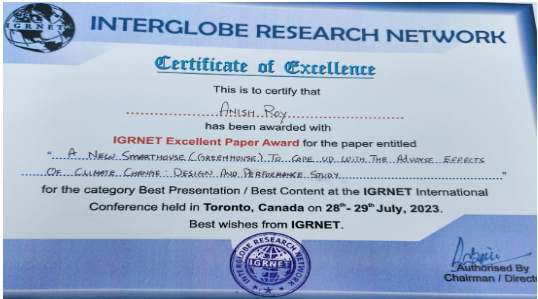Smart Greenhouse
VI. Smart Greenhouse
Motivation
Climate change is increasingly threatening agriculture through rising temperatures, prolonged droughts, and extreme weather events. These adverse effects not only reduce crop yields but also place farmers at risk of health issues and increase the global strain on water and food resources. Traditional greenhouses rely on manual monitoring and fixed schedules, which are insufficient to adapt to dynamic environmental changes, creating the need for automated, data-driven solutions.
Goal
The goal of this work is to design and implement a smart greenhouse equipped with programmable sensors and actuators that autonomously regulate temperature, humidity, and soil moisture. By leveraging IoT platforms and real-time analytics, the smart greenhouse aims to optimize plant growth, conserve water, and reduce manual labor, enabling sustainable and efficient agricultural practices.
Results
Experiments conducted over four months demonstrate that the smart greenhouse successfully maintains optimal temperature, humidity, and soil moisture conditions for plant growth without explicit human intervention. Sensor data is periodically uploaded to the ThinkSpeak platform for remote monitoring, confirming that the system provides reliable, automated control while enhancing efficiency and crop yield.
Publications
Listed below are our publications based on this research:
- Anish Roy, Kostuab, "A New Smart Greenhouse to Cope up with the Adverse Effects of Climate Change: Design and Performance Study", International Conference on Electronics, Information, and Communication (ICEIC), July 26 - 27, 2023, Toronto, Canada.
Recognition and Awards
Awarded the Excellent Paper Award

Certificate of Presentation
